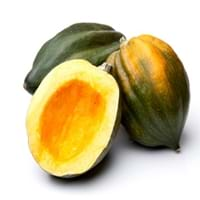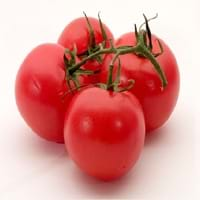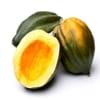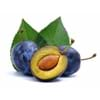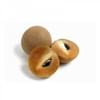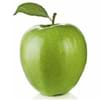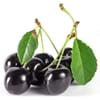Health Benefits
Anti-inflammatory properties, Arthritis treatment, Regulates Blood Sugar
Anti depressant, Cancer prevention, Heart care, Muscle pain relief, Prevents constipation, Regulation of heart rate, Weight loss properties
General Benefits
Boosts immune system, Controls blood sugar levels, Digestive aid
Controls blood pressure, Eye care, Maintains healthy cholesterol level, Strengthens bones
Skin Benefits
Nourishes skin, Protects skin from oxidative stress
Anti-aging benefits, Heals sunburn, Skin rejuvenation, Treatment of acne, Treatment of skin diseases
Hair Benefits
Prevents hair loss, Promotes longer and healthier hair, Regulates hair growth
Good conditioner, Prevents hair loss, Softening mask
Allergy Symptoms
Asthma, Red rash, Swelling of mouth, tongue or lips
Anaphylaxis, Coughing, Diarrhea, Eczema, Hives, Itching sensation in throat, Nausea, Skin Rashes, Runny nose, Sneezing, Swelling of mouth, tongue or lips, Vomiting, Wheezing
Side Effects
Diarrhoea, Vomiting
Heart burn
Best Time to Eat
Along with meal, As a snack in the late afternoon, Don't eat after meal, Eat the fresh ones, avoid mixing with any other foods, don't eat after meal.
Along with meal, Don't consume at night and before bed, Morning time (before lunch)
Vitamin B5 (Pantothenic Acid)
Vitamin C (Ascorbic Acid)
Vitamin E (Tocopherole)
Not Available
Vitamin K (Phyllochinone)
Not Available
Lutein+Zeaxanthin
Not Available
Phytosterol
Not Available
Calories in Fresh Fruit with Peel
Calories in Fresh Fruit without Peel
Not Available
Not Available
Type
Berry
Berry, Fruit vegetable
Season
Winter
All seasons
Varieties
Bush Table Queen, Heirloom Table Queen, Festival Hybrid, Early Acorn Hybrid, Table Ace, Ebony and Cream of the Crop
Better Boy, Early Girl, Beefsteak, Beefmaster, Pink Brandywinem, Caspian Pink, Thai Pinks, Hawaiian Pineapple, Kellogg’s Breakfast, Cherokee Purple, Black Ethiopian and Paul Robeson
Color
Dark green, Green-yellow, Orange green
Green, Orange, Pink, Purplish black, Red, White, Yellow
Taste
Sweetish
Sour, Sweet
Origin
Central America, North America, Unknown
Central America, South America
Soil Type
Well-drained
Loam, Sandy loam
Climatic Conditions
Cold, Sunny
Sunny, Warm
Facts about
- It was named as Acorn Squash for its resemblance to a large ribbed acorn.
- It is said that squash was being grown in Mexico as long as 10,000 years ago.
- It was the first food cultivated by native American Indians.
- Around 10,000 varieties of tomatoes are grown in the world.
- In Buñol, people celebrate the Tomatina festival where around 1.5 lakh tomatoes are used.
- As per Guinness book of records, heaviest tomato weighed 3.51 kg.
Other Countries
Egypt, India, Iran, Italy, Mexico, Russia, Turkey, Ukraine, United States of America
Brazil, Egypt, India, Iran, Italy, Mexico, Spain, Turkey, United States of America
Top Importer
Costa Rica
Nigeria
Top Exporter
United States of America
Netherlands
Botanical Name
Cucurbita Pepo
Solanum lycopersicum
Synonym
Winter Squash
Lycopersicon esculentum
Subkingdom
Tracheobionta
Tracheobionta
Division
Magnoliophyta
Magnoliophyta
Class
Magnoliopsida
Magnoliopsida
Subclass
Dillenhidae
Asteridae
Order
Cucurbitales
Solanales
Family
Cucurbitaceae
Solanaceae
Species
Pepo
S. lycopersicum
Generic Group
Not Available
Nightshade
Difference Between Acorn squash and Tomato
We might think that Acorn squash and Tomato are similar with respect to nutritional value and health benefits. But the nutrient content of both fruits is different. Acorn squash and Tomato Facts such as their taste, shape, color, and size are also distinct. The difference between Acorn squash and Tomato is explained here.
The amount of calories in 100 gm of fresh Acorn squash and Tomato with peel is 40.00 kcal and 18.00 kcal and the amount of calories without peel is Not Available and Not Available respectively. Thus, Acorn squash and Tomato belong to Low Calorie Fruits and Low Calorie Fruits category.These fruits might or might not differ with respect to their scientific classification. The order of Acorn squash and Tomato is Cucurbitales and Solanales respectively. Acorn squash belongs to Cucurbitaceae family and Tomato belongs to Solanaceae family. Acorn squash belongs to Cucurbita genus of Pepo species and Tomato belongs to Solanum genus of S. lycopersicum species. Beings plants, both fruits belong to Plantae Kingdom.
